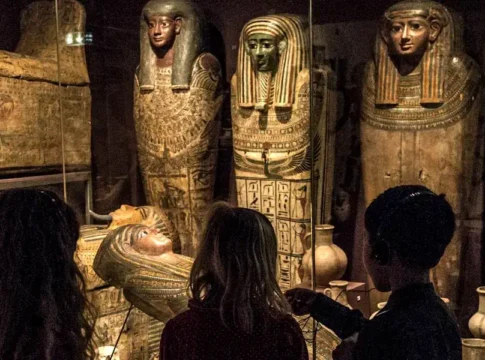Biologiska Museet: Nature and Architectural Splendor
The Biologiska Museet (Biological Museum) on Stockholm’s Djurgården is a landmark of natural history and artistic vision. Built in 1893, it showcases Scandinavian wildlife through groundbreaking dioramas painted by Bruno Liljefors. Designed in the style of a Norwegian stave church, it stands as both a scientific and architectural masterpiece. Though currently closed for renovations, the museum remains an enduring memory for generations of visitors.


Architectural splendor rooted in tradition
The museum was a celebrated attraction at the Stockholm Exhibition of 1897. Architect Agi Lindegren designed it in the National Romantic style, drawing inspiration from Norway’s Borgund Stave Church. Its tarred wooden shingles, steep gables, and carved portals blend rustic Scandinavian charm with medieval grandeur.




Dioramas: A window into Nordic nature
The museum became world-renowned for its realistic dioramas. Without glass or electric lighting, natural daylight filtered from overhead skylights gave the displays a lifelike quality. Bears, moose, seabirds, and other Nordic species were set in habitats painted by Bruno Liljefors, whose artistry made the museum unique in its time.
Masterful craftsmanship in every display
Each diorama merges scientific accuracy with artistic brilliance. Taxidermied animals are placed within natural materials and panoramic backdrops, offering a cinematic glimpse into ecosystems as they appeared more than a century ago.
Educational significance of dioramas
More than artistic marvels, the dioramas served as early educational tools. They helped visitors understand animal behavior, ecosystem interactions, and the richness of Nordic biodiversity long before modern nature films or virtual reality existed.
A legacy of scientific curiosity
Beyond its dioramas, the museum also housed collections in zoology, botany, and paleontology. Its extensive taxidermy of marine life, birds, and mammals exemplified meticulous craftsmanship, designed to both inspire and educate.
Conclusion
Though closed since 2017, the Biologiska Museet remains one of Stockholm’s most beloved landmarks. Its innovative architecture, pioneering dioramas, and cultural legacy continue to inspire curiosity. Visitors and locals alike eagerly await its reopening, when Nordic wildlife and 19th-century artistry will once again meet under its iconic roof.
🧭 What’s nearby?
- 🛳️ Vasa Museum – Discover the world’s best-preserved 17th-century warship just steps away.
- 🏡 Skansen Open-Air Museum – Sweden’s living history and wildlife park, perfect for families.
- 🎢 Gröna Lund – Stockholm’s historic amusement park with thrilling rides and concerts.
- 📚 Junibacken – A storybook world celebrating Astrid Lindgren and beloved children’s tales.
- 🖼️ The Thiel Gallery – A stunning villa museum showcasing early 20th-century Nordic art.





